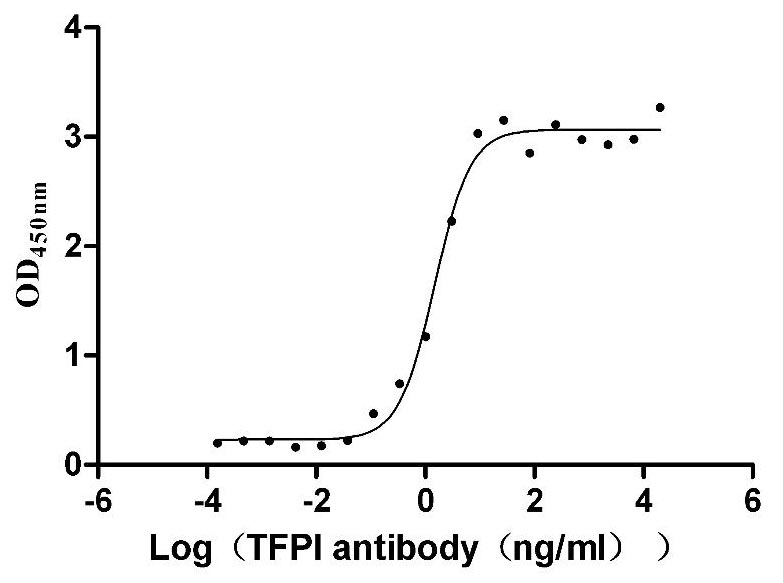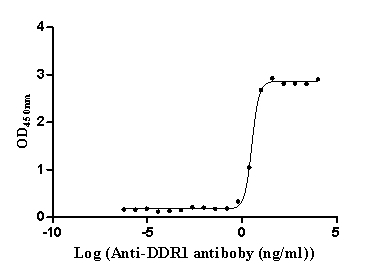Recombinant Putative ABC transporter ATP-binding protein SAV_3608 (SAV_3608)
-
中文名稱:阿維米特鏈霉菌SAV_3608重組蛋白
-
貨號:CSB-YP772479SNN
-
規(guī)格:
-
來源:Yeast
-
其他:
-
中文名稱:阿維米特鏈霉菌SAV_3608重組蛋白
-
貨號:CSB-EP772479SNN
-
規(guī)格:
-
來源:E.coli
-
其他:
-
中文名稱:阿維米特鏈霉菌SAV_3608重組蛋白
-
貨號:CSB-EP772479SNN-B
-
規(guī)格:
-
來源:E.coli
-
共軛:Avi-tag Biotinylated
E. coli biotin ligase (BirA) is highly specific in covalently attaching biotin to the 15 amino acid AviTag peptide. This recombinant protein was biotinylated in vivo by AviTag-BirA technology, which method is BriA catalyzes amide linkage between the biotin and the specific lysine of the AviTag.
-
其他:
-
中文名稱:阿維米特鏈霉菌SAV_3608重組蛋白
-
貨號:CSB-BP772479SNN
-
規(guī)格:
-
來源:Baculovirus
-
其他:
-
中文名稱:阿維米特鏈霉菌SAV_3608重組蛋白
-
貨號:CSB-MP772479SNN
-
規(guī)格:
-
來源:Mammalian cell
-
其他:
產(chǎn)品詳情
-
純度:>85% (SDS-PAGE)
-
基因名:SAV_3608
-
Uniprot No.:
-
別名:SAV_3608; Putative ABC transporter ATP-binding protein SAV_3608; EC 7.-.-.-
-
種屬:Streptomyces avermitilis
-
蛋白長度:full length protein
-
表達區(qū)域:1-262
-
氨基酸序列MNSPAPVGSP APVSAPSLDV AGLAFAYPDG HQALFGVDFR VERGERVALL GPNGAGKTTL VLHLNGILTG GAGTVTVAGL PVGKRHMAQI RRKVGIVFQD PDDQLFMPTV REDVAFGPAA AGLTGAELEA RVDRALDQVG MAEFKGRPPH HLSFGQRRRV AVATVLAMEP EILVLDEPSS NLDPASRREL ADILRSLDVT VLMVTHDLPY ALELCPRSLI LSEGVIAADG RTGELLADDT LMRAHRLELP FGFDPRSVTM GA
-
蛋白標(biāo)簽:Tag?type?will?be?determined?during?the?manufacturing?process.
The tag type will be determined during production process. If you have specified tag type, please tell us and we will develop the specified tag preferentially. -
產(chǎn)品提供形式:Lyophilized powder
Note: We will preferentially ship the format that we have in stock, however, if you have any special requirement for the format, please remark your requirement when placing the order, we will prepare according to your demand. -
復(fù)溶:
-
儲存條件:Store at -20°C/-80°C upon receipt, aliquoting is necessary for mutiple use. Avoid repeated freeze-thaw cycles.
-
保質(zhì)期:The shelf life is related to many factors, storage state, buffer ingredients, storage temperature and the stability of the protein itself.
Generally, the shelf life of liquid form is 6 months at -20°C/-80°C. The shelf life of lyophilized form is 12 months at -20°C/-80°C. -
貨期:Delivery time may differ from different purchasing way or location, please kindly consult your local distributors for specific delivery time.Note: All of our proteins are default shipped with normal blue ice packs, if you request to ship with dry ice, please communicate with us in advance and extra fees will be charged.
-
注意事項:Repeated freezing and thawing is not recommended. Store working aliquots at 4°C for up to one week.
-
Datasheet :Please contact us to get it.
靶點詳情
-
功能:Probably part of an ABC transporter complex. Responsible for energy coupling to the transport system.
-
亞細胞定位:Cell membrane; Peripheral membrane protein.
-
蛋白家族:ABC transporter superfamily
-
數(shù)據(jù)庫鏈接:
KEGG: sma:SAVERM_3608
STRING: 227882.SAV_3608
Most popular with customers
-
Recombinant Human Retinol-binding protein 4 (RBP4) (Active)
Express system: Mammalian cell
Species: Homo sapiens (Human)
-
Recombinant Human Tumor necrosis factor receptor superfamily member 18 (TNFRSF18), partial (Active)
Express system: Mammalian cell
Species: Homo sapiens (Human)
-
Recombinant Human Tumor necrosis factor receptor superfamily member 11B (TNFRSF11B) (Active)
Express system: Mammalian cell
Species: Homo sapiens (Human)
-
Recombinant Human Tissue factor pathway inhibitor (TFPI), partial (Active)
Express system: Mammalian cell
Species: Homo sapiens (Human)
-
Recombinant Human C5a anaphylatoxin chemotactic receptor 1 (C5AR1)-VLPs (Active)
Express system: Mammalian cell
Species: Homo sapiens (Human)
-
Recombinant Mouse Tyrosine-protein kinase Mer (Mertk), partial (Active)
Express system: Mammalian cell
Species: Mus musculus (Mouse)
-
Recombinant Human Epithelial discoidin domain-containing receptor 1 (DDR1), partial (Active)
Express system: Mammalian cell
Species: Homo sapiens (Human)
-
Recombinant Human Early activation antigen CD69 (CD69), partial (Active)
Express system: Mammalian cell
Species: Homo sapiens (Human)


















